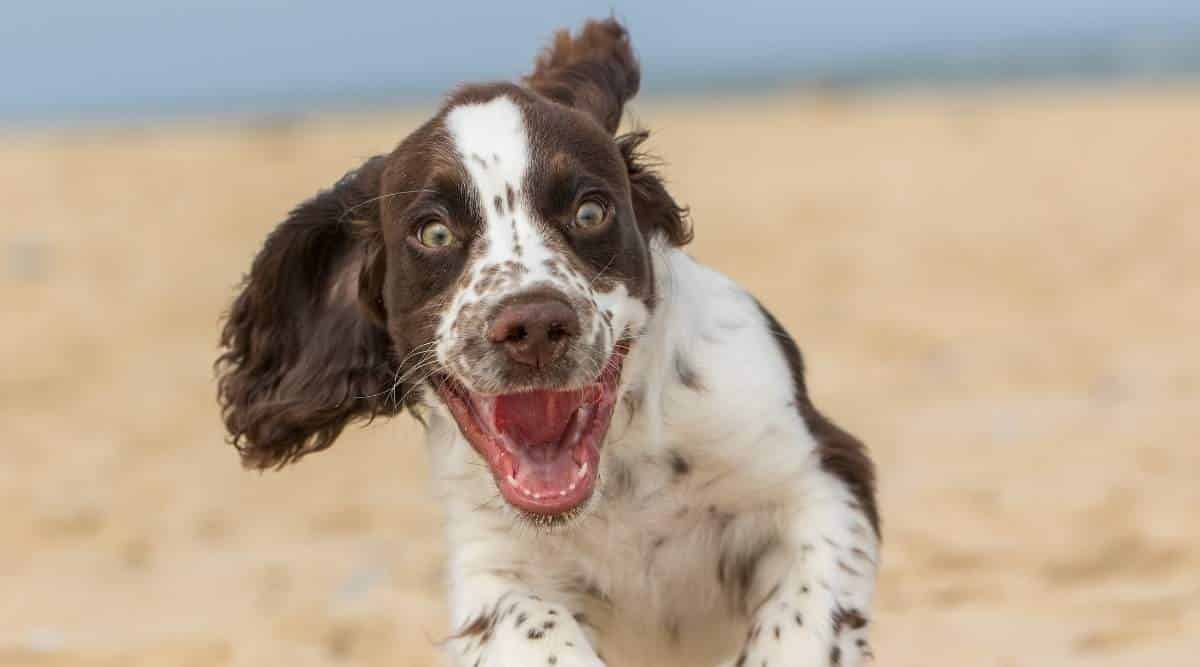22 Scariest Dog Breeds That Look Like They Eat Intruders For Breakfast
When you purchase through links on our site, we may earn a commission. Here’s how it works.
Some dogs say, “Woof.” These scariest dog breeds say, “Try me.”
Table of Contents
Whether they’re muscle-bound beasts or 150-pound fluff tanks, these scary dog breeds have one thing in common: they look like they could guard the gates of hell.
These are the scariest dog breeds on the planet. Massive, muscular, wolf-like beasts that might make your Amazon driver rethink their life choices.
But here’s the twist: most of them? Giant teddy bears in disguise. Don’t worry; I’ve got the scary dog looks and the surprising truths behind them.
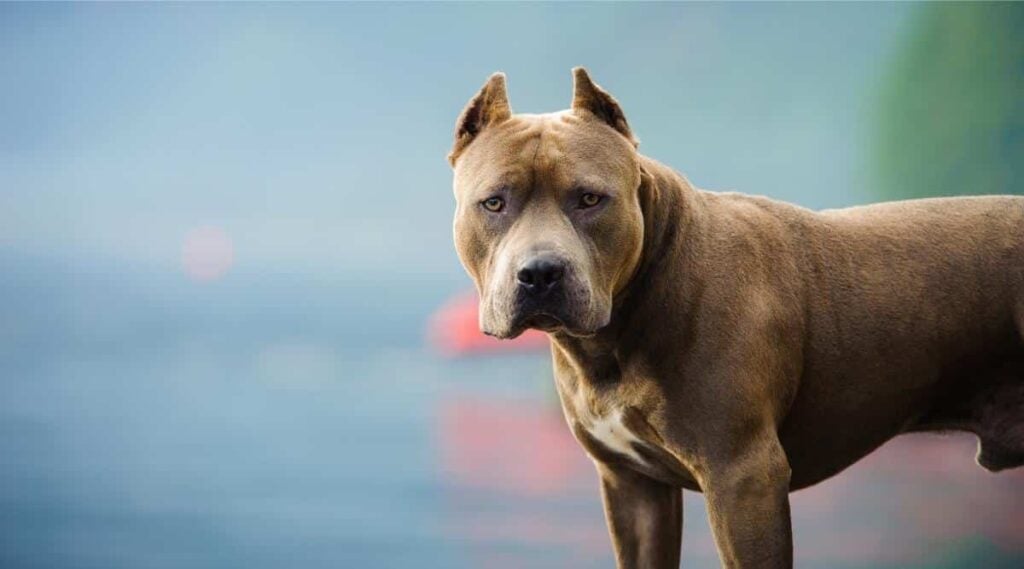
What Makes A Dog Look “Scary”?
Some dogs just have that look. The square jaw. The slow blink. The “don’t test me” energy. But here’s the truth: looking scary doesn’t mean being dangerous.
In fact, some of the most intimidating-looking breeds are also the biggest sweethearts, and some of them are scared of the vacuum. Some of the yappy little ones are often the real menaces (I’m looking at you, Dachshunds!)
What makes a dog “scary” is a combo of size, stare, and swagger. And while a few on this list have a bite to match the bark, most are just rocking a naturally intense vibe.
Why Do People Want Scary-Looking Dogs?
Not everyone wants a dog that fits in a purse or wears sweaters. Some people want a dog that looks like they pay taxes and own a gym membership.
There are a few reasons people lean toward the scariest dog breeds:
- Home Security. Nothing says, “Maybe try the neighbor’s house,” like a 120lb stare-down machine.
- Confidence by Association. Walking a Cane Corso makes you feel like a Marvel villain (in the best way).
- They’re Misunderstood Softies. Many “scary” dog breeds are incredibly loyal, loving, and great with families once you get past the war-dog aesthetic.
- Statement Making. For some, it’s less about protection and more about turning heads.
Scary dogs make strangers pause. But for their humans, they’re often just giant cuddle monsters with serious RBF (resting boss face).
Scariest Dog Breeds That Look Like Bodyguards
Muscle-Bound, Mean-Muggin’ Breeds
These dogs don’t just guard your home; they are the home security system. Built like tanks, with faces that say, “Don’t even think about it,” these scariest dog breeds are stacked with muscle, swagger, and serious intimidation energy.
But don’t let the scariest dog breed tough exterior fool you; some are total sweethearts under the right roof.
1. Rottweiler
Looks like a bouncer. Acts like a loyal best friend with a side of sass.
With a broad chest, thick jaw, and serious eyes, Rottweilers were built to guard. Originally used to drive cattle and protect property in Germany, they have a natural intensity that makes people pause.
But with proper training and attention, they’re playful, people-loving protectors. Just don’t mistake their calm for weakness because they know when to flip the switch.
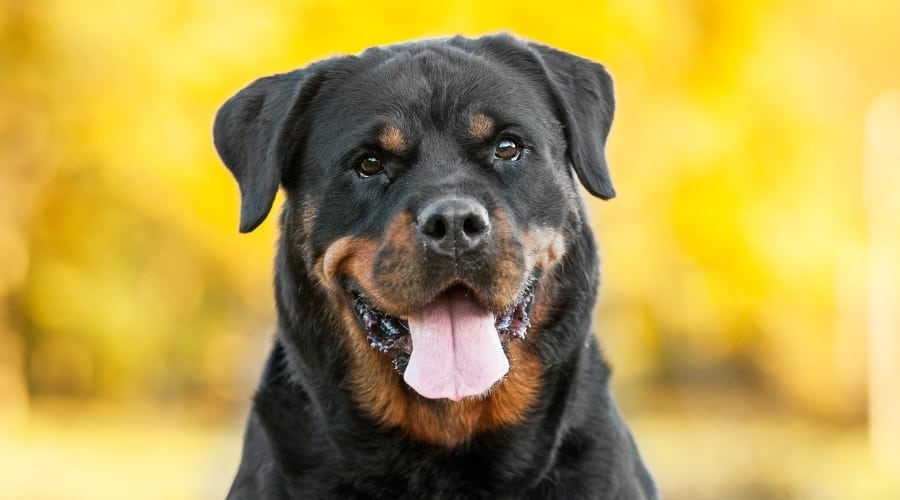
True to their labor-intensive history, Rottweilers are incredibly strong and intelligent dogs. They do not cower in the face of danger and can be fiercely protective of their kin.
While Rottweilers do not instantly jump into attack mode in the face of a stranger or a new situation, proper breeding is required for Rottweilers. They can be quite rowdy when provoked and learn to be aggressive if not led and taught with a firm hand.
With the right love and socialization, Rottweilers become devoted family dogs. Gentle with their people but ready to protect them when it matters. Scariest dog breed? Maybe. Cuddle bug? Totally.
2. American Bully
Stocky, swaggering, and secretly the class clown.
Don’t let the muscles fool you – this dog is a total sweetheart. American Bullies look like they were built in a gym, but their true strength is in how much they adore their people.
Loyal, affectionate, and surprisingly gentle, they thrive on attention and love being part of the family. With the right environment, they’re more cuddle buddies than guard dogs. Just one with biceps.
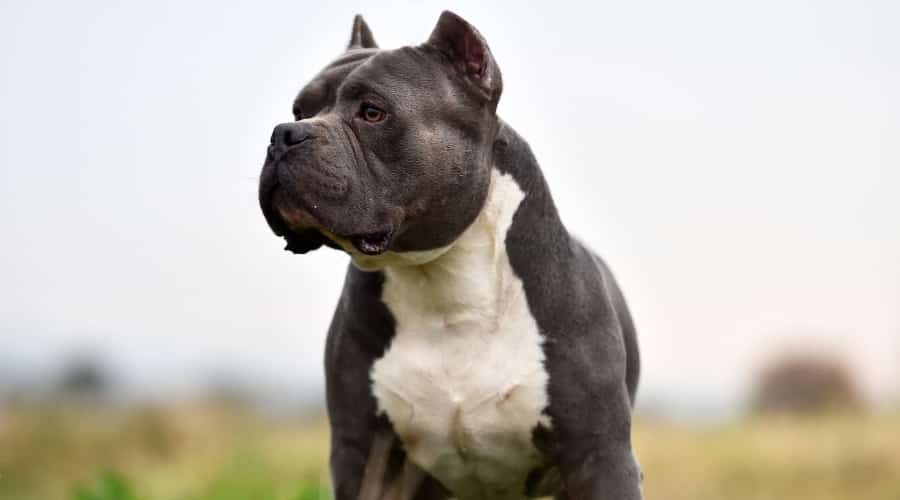
American Bullies are one of the different types of Pitbull dogs. There are four distinct Ambull sizes: Pocket, Standard, Classic, and XL.
Due to their dog-fighting past, they have the unfortunate reputation of being violent fighting dogs. Plus, they are one of the prime choices for underground fighting pits. This is why they are thought of as one of the scariest dog breeds.
Without the pit-fighting upbringing, American Bullies are gentle, lovable lap dogs, always eager for another hug and cuddle. These days, they are most content at home but will protect their family in the face of danger.
Most people who haven’t done their research on American Bullies will turn tail and run, expecting a vicious predator. It all comes down to responsible ownership.
3. Cane Corso
The Roman war dog that might be silently judging you.
This ancient Italian breed looks like it belongs in armor. Cane Corsos have a stillness that’s more intimidating than barking. With a calm, calculating presence that feels like they’re reading your intentions.
Bred for protection and loyalty, they need confident, experienced owners… and maybe their own couch.
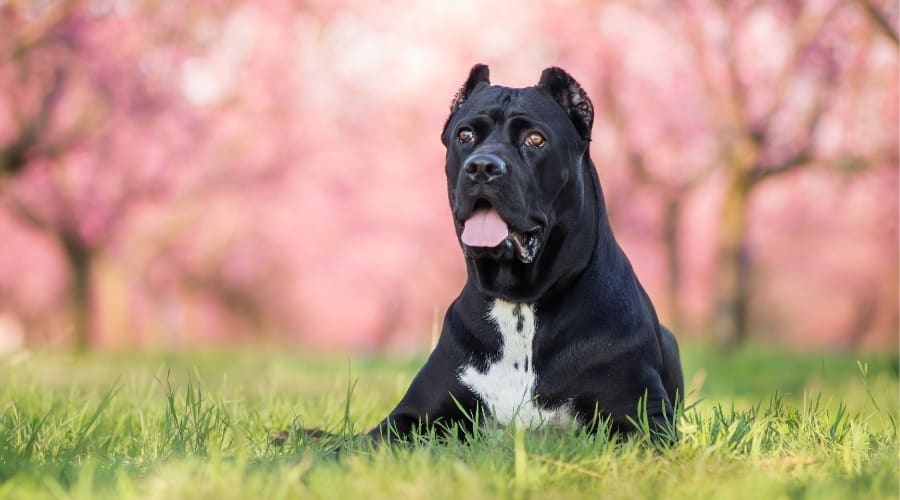
Cane Corsos tend to be headstrong and fierce, which makes it a difficult dog breed to handle. They are extremely wary of outsiders and need proper socialization to get used to others.
They also need obedience training, puppy kindergarten, and authoritarian leadership to be able to follow commands. A Cane Corso may try to cement their position as the pack leader, which may spell both good and bad for owners.
When fully grown, the Cane Corso can be one of the most loyal companions and the fiercest defenders of one’s home. They are highly territorial and will tell dubious strangers that they are not welcome in their sight.
4. Bullmastiff
Built like a tank, moves like a lazy cat.
Originally bred to tackle nighttime poachers, Bullmastiffs are pure physical presence. They’re huge, quiet, and unexpectedly graceful until they try to climb into your lap.
Protective but deeply affectionate with their people, they’re the kind of dog that says, “I’ve got this,” without making a sound.
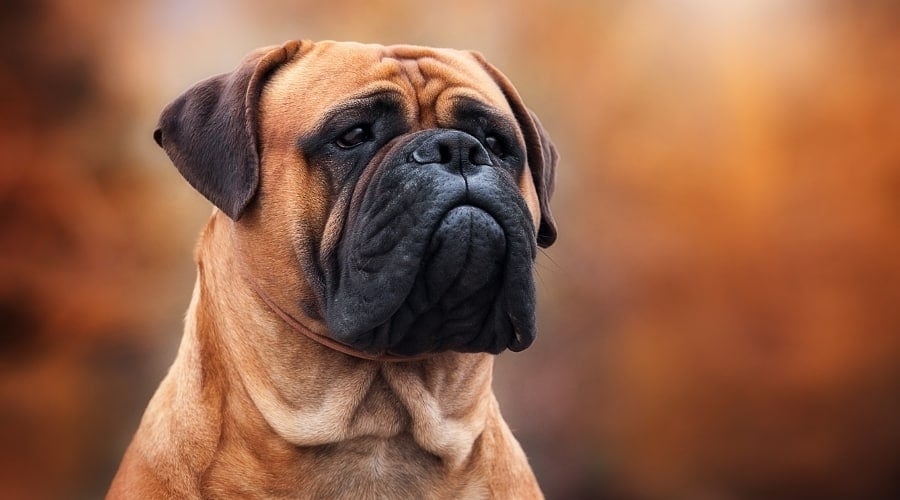
The Bullmastiff is another mastiff dog that has a negative reputation. While most well-trained Bullmastiffs are pretty gentle and easygoing around people they recognize, they will protect their home and family if they need to.
In the face of danger, they can flip drastically between a calm demeanor and attack mode, so proper socialization is very important. Seeing a dog go from napping to growling in a split second can catch anyone off guard.
5. Boerboel
Used to guard farms from lions. Yes, actual lions.
This South African powerhouse is one of the most imposing and scariest dog breeds in the world. Boerboels are giant, serious, and known for their fearless loyalty.
They were bred to patrol massive farmsteads and face down wild predators. So yeah, they can probably handle your front yard. With the right training and socialization, they’re deeply bonded family dogs who just happen to look terrifying.
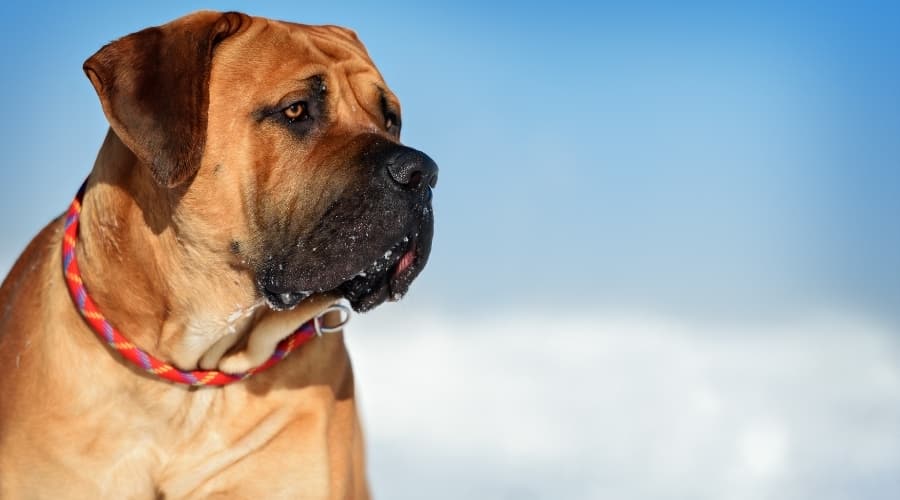
These dogs are fearless and stare down challenges to their authority right in the eye. They can easily chase down burglars and intruders with the right training.
Surprisingly, Boerboels are among the fastest and most agile Mastiffs. They also sport powerful jaws, which can be useful at the right moment.
6. Presa Canario
Big, blocky, and intense, the kind of dog that makes people cross the street.
The Presa Canario looks like it was engineered to intimidate: thick muscles, a wide jaw, and a calm stare that gives nothing away. Initially bred to work livestock in the Canary Islands (and sometimes guarding it very aggressively), this breed is powerful and serious by nature.
With early socialization and a confident, experienced owner, the Presa can be loyal and steady, but they’re not a casual pet. This is a breed for people who understand dogs and definitely not for first-time owners.
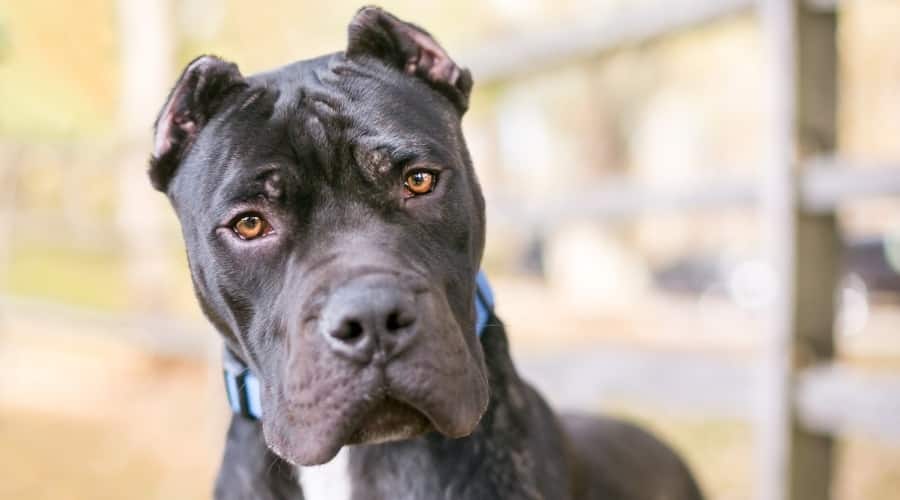
The Perro de Presa Canario, or the Canary Mastiff, is also usually banned in areas that do not allow certain dog breeds. They have a reputation for being aggressive and are responsible for a significant number of permanent and non-permanent injuries.
They’re not the loudest in the room, but they’re the ones everyone’s watching. Give them structure, leadership, and respect, and you’ll have a devoted protector who commands attention without ever needing to raise their voice.
Presas often chew when stressed or bored, which can pose a challenge to many dog owners. They need lots of mental and physical stimulation and plenty of tough chew toys to keep them occupied.
7. Dogo Argentino
White as snow, silent as a shadow, and strong enough to wrestle wild boars.
Built for big-game hunting in Argentina, the Dogo Argentino has a clean, athletic build and a drive that doesn’t quit. They’re muscular without looking bulky but make no mistake. This dog can overpower most threats without breaking a sweat.
While they bond deeply with their families and can be affectionate, they need structure, boundaries, and purpose. They’re not naturally aggressive, but they are incredibly capable, and that alone makes them intimidating.
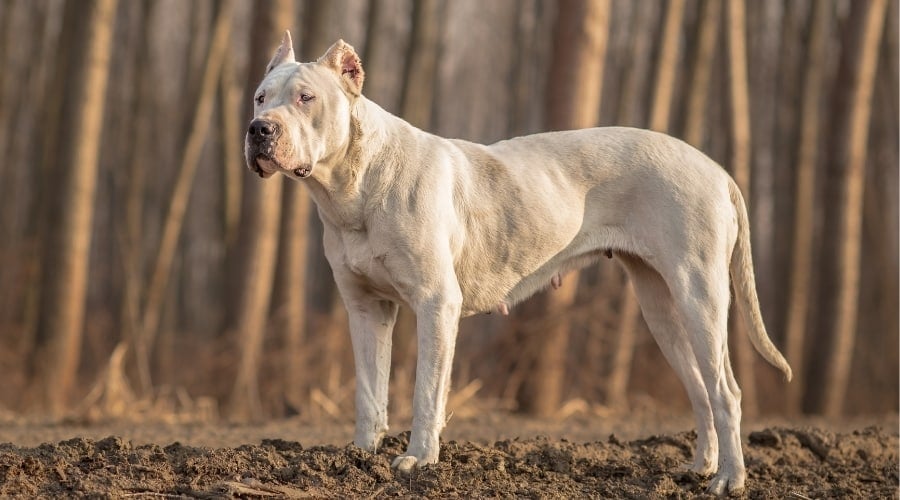
The Dogo Argentino is a powerful, elegant dog bred to hunt, chase, and catch dangerous game. They have a high prey drive, which can lead them to wander about or chase small animals. So, they may not fare well with other pets in the vicinity.
Dogo Argentinos have also been used in dog fighting rings and have been banned in several countries, including Australia, Denmark, Singapore, and others. They still have the power and speed of hunting dogs, so an intruder may have to think twice about breaking into a home guarded by a Dogo Argentino.
8. Dogue de Bordeaux
Looks like a tank, drools like a faucet, loves like a lapdog.
This French powerhouse is one of the oldest Mastiff-type breeds and easily one of the most intimidating. With a massive head, low-set glare, and a body built like a bulldozer, the Dogue de Bordeaux doesn’t need to bark to make a statement.
But behind the serious mug is a deeply affectionate, loyal companion that forms tight bonds with their family. They’re calm, confident, and famously drooly, so prepare to share your couch and your towels. Despite their size, they’re gentle at heart and surprisingly sensitive to their people’s moods.
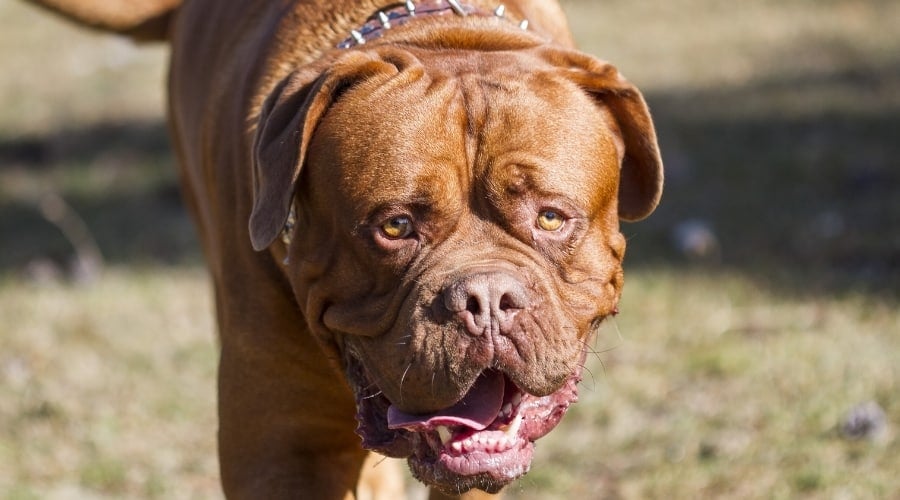
The French Mastiff was first bred as a fighting and hunting dog until the French Revolution. They were then used as guard dogs for livestock. Though they look serious, they are a lively and affectionate breed that thrives in an equally active household.
Their expression may give some intruders pause. Behind their serious mask is a powerful individual who does not back down from a challenge or threat. Outside of a threat, they are quite happy to spend time relaxing with their family.
9. American Pit Bull Terrier
Feared by many, misunderstood by most, loved by those who know them.
Few breeds come with more baggage or loyalty than the American Pit Bull Terrier (APBT). With a compact, muscular build and serious jawline, they’ve been unfairly branded as aggressive, dangerous, and unpredictable.
In reality, APBTs are energetic, people-loving, deeply devoted dogs that thrive on affection and structure. Yes, they’re powerful, but they’re also incredibly trainable and emotionally tuned in. The real problem? Bad owners, not bad dogs.
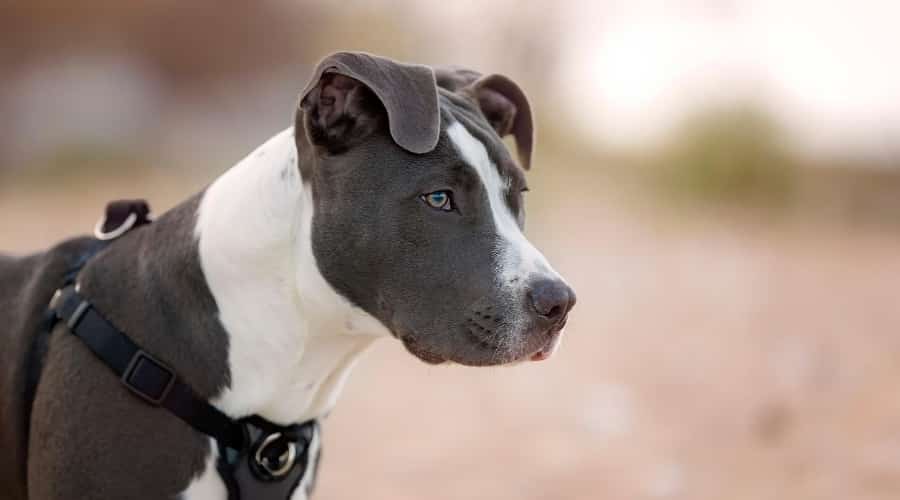
They were once known as “nanny dogs” for their loyalty and gentleness with children, a far cry from the media-fueled fear they face today. What makes APBTs dangerous isn’t the dog, it’s the lack of training, socialization, or worse, intentional abuse. In the right hands, they’re playful, affectionate, and incredibly eager to please.
10. Bull Terrier
Egghead, muscled body, and a wild streak that never quits.
With their iconic oval-shaped heads and small, deep-set eyes, Bull Terriers are instantly recognizable and often misunderstood. They’re compact, strong, and often bursting with chaotic energy, which can read as intense if you don’t know them.
But beneath that muscle and mischief is a loyal, clownish dog that lives to entertain. They’re bold, stubborn, and fearless, traits that can lead to problems without structure. Handled right, though? They’re pure comedic muscle with a heart of gold.
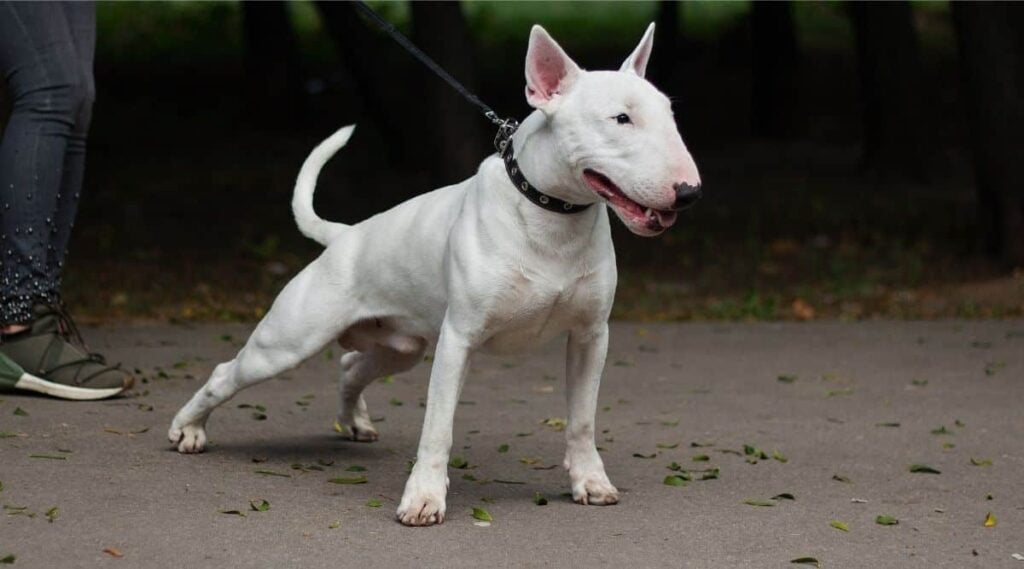
Despite their tough-dog exterior, Bull Terriers are total softies with their people. They bond deeply with their families and often act like oversized toddlers – cuddly, goofy, and completely devoted. They thrive on human attention and will happily wedge themselves into your space (and lap) just to be close.
Around kids, they’re playful and protective, and with proper socialization, they’re one of the most loving companions you could ask for, just in a body that looks ready to wrestle a car.
Scary Dogs That Are Too Big To Be Real
Giant Dog Breeds That Intimidate On Sight
Some dogs look like they wandered off the set of a fantasy movie, massive, slow-moving, and so imposing that even delivery drivers keep their distance. But size doesn’t always mean scary on the inside. These gentle giants just happen to come in linebacker-sized packages.
11. Great Dane
Built like a horse, acts like a needy roommate.
Great Danes are one of the tallest dog breeds in the world. When they stand up, they can be eye-level with you (and taller than your fridge). They carry themselves like royalty but have the emotional range of a cartoon character: goofy, dramatic, and clingy.
Their sheer size can be alarming, but they’re often more scared of you than you are of them unless you’re holding treats. This pup loves Scooby snacks more than anything.
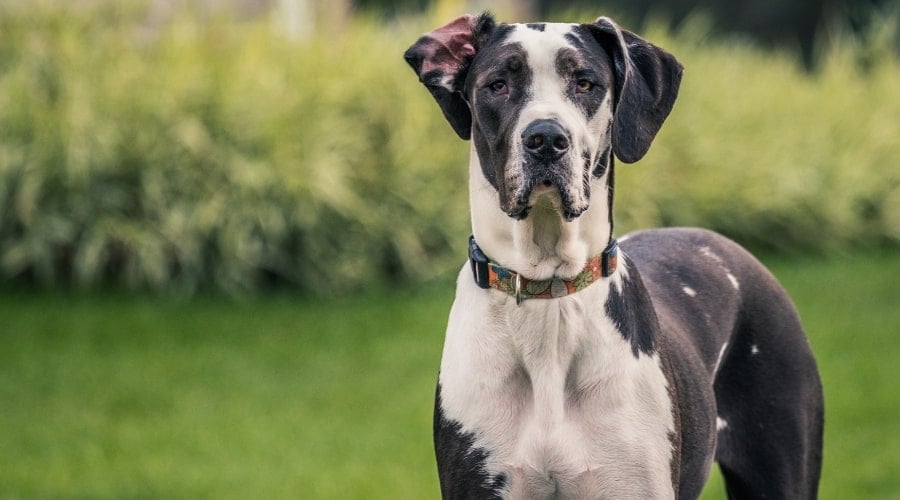
Great Danes were bred to hunt boar but have had the hunting attitude bred out of the line. This makes them adjust quite well to a domestic setting. But, they do not fare well in a small apartment space, as their ever-wagging tail may knock objects over.
Great Danes are gentle with children and make great family pets. However, the sheer size and the powerful bark of the Great Dane can deter many criminals or alert homeowners of an intrusion.
Like many large dog breeds, Great Danes need a great deal of exercise and space. They need lots of social interaction and play, or else they get moody. Great Danes may also benefit from obedience training, as an overly playful Great Dane may cause some difficulties.
12. Great Pyrenees
Silent, watchful, and could pass for a snow-covered lion.
Originally bred to guard livestock in the mountains, Great Pyrenees dogs are calm, alert, and massive. They’re known for their serene confidence – barking only when something’s actually wrong.
They might not chase threats down, but they’ll definitely stand their ground. Under all that fur is a deeply loyal, low-drama companion who prefers naps to nonsense.
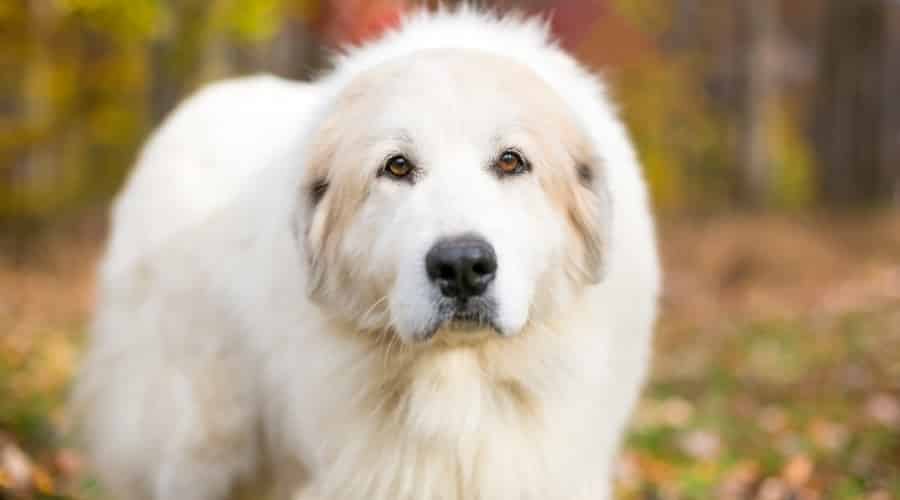
These dogs somewhat resemble friendly dog breeds like Golden Retrievers. However, they were bred from herding dogs and are very serious workers.
As a guardian dog, the Great Pyrenees use their powerful bark to full effect, which can scare off an intruder or burglar. A Great Pyrenees is also a very independent dog and can scare off intruders all on its own if it feels threatened.
When not provoked, a Great Pyrenees can make a great family pet. They are very caring and can learn to be gentle with children and smaller pets. They do require a fenced-in space or GPS fencing since they often try to explore the edges of their territory.
13. English Mastiff
So big it feels like you live with a sofa that occasionally drools.
English Mastiffs can weigh up to 230 pounds, but they carry it with gentle, slow-motion swagger. They’re surprisingly chill, often preferring to lie down and watch the world go by (unless that world threatens their humans).
Their bark is deep enough to shake floorboards, but they rarely use it. Think of them as living security blankets with jowls.
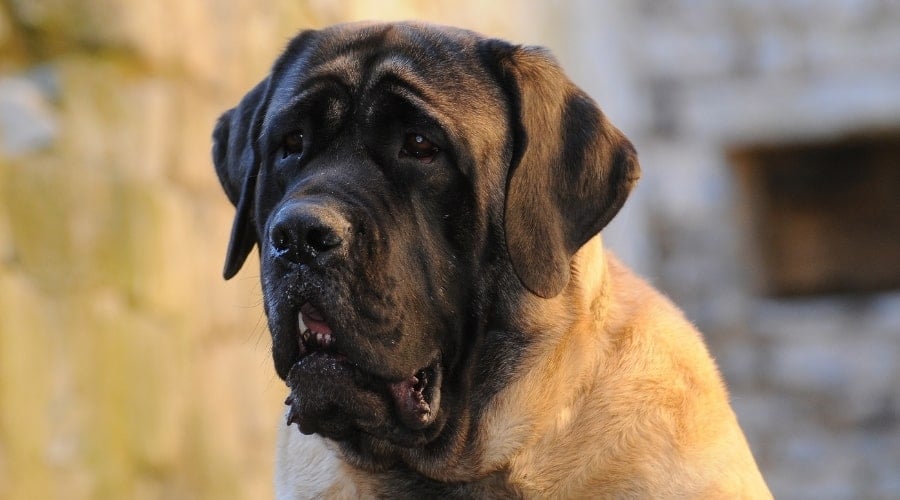
This massive dog breed often outweighs even their owners! They tend to be silent guards and only bark in dangerous situations. A born guard dog, an English Mastiff is always on alert for intruders and does not need to be trained to guard.
Fortunately, they try not to attack with their teeth but tend to pin down or trap an intruder in a corner. Given their sheer size, an English Mastiff would find it easy to tackle and hold down most adult intruders.
14. Newfoundland
Looks like a bear, swims like a lifeguard, cuddles like a champ.
Newfoundlands are huge, yes, but their real power is in their heart. Bred for water rescues, they’re natural swimmers with a nurturing instinct. That soft look? It’s real.
These dogs are famously great with kids and will often put themselves between their humans and danger, even if that “danger” is just a fast-moving toddler. Bonus: they double as winter heating systems.
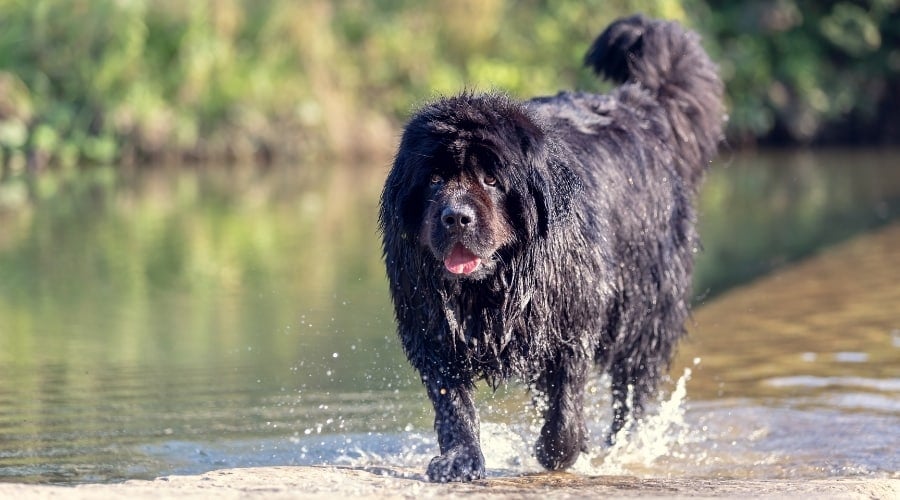
The Newfoundland was first bred as work dogs, where they pulled nets full of fish through the cold Newfoundland sea. They are well-known for being great swimmers, but they move and run just as well on land!
Criminals and unwanted individuals who may not be familiar with dogs may think twice when encountering a Newfoundland dog. Newfies are willing to protect their owners, often putting themselves in between their owners and a threat.
Though they look threatening, Newfoundland dogs are usually docile and gentle. They also tend to put on more weight than they need, so anyone who wants to own a Newfoundland dog will need ample yard space to keep them trim. As Newfoundland dogs love being in the water, a swimming pool may be in order!
Scary Dogs That Look Like Wolves
And Kind of Act Like Them, Too
These dogs don’t just look intense; they carry a presence. With wild ancestry, thick coats, and stare-down energy, they’re the kinds of scariest dog breeds that make people ask, “Is that legal?” Some were bred to guard, some to survive, and all of them have that unmistakable don’t test me look.
15. Caucasian Ovcharka
Part guard dog, part mountain legend, all intimidation.
Also called the Caucasian Shepherd, this beast was bred to protect livestock from wolves and bears in the Caucasus Mountains. It shows. They’re huge, fluffy, and fierce-looking, like a polar bear with a purpose.
Extremely territorial and deeply protective, they require intense training and early socialization. Handled right, they’re loyal defenders. Mishandled? Good luck.
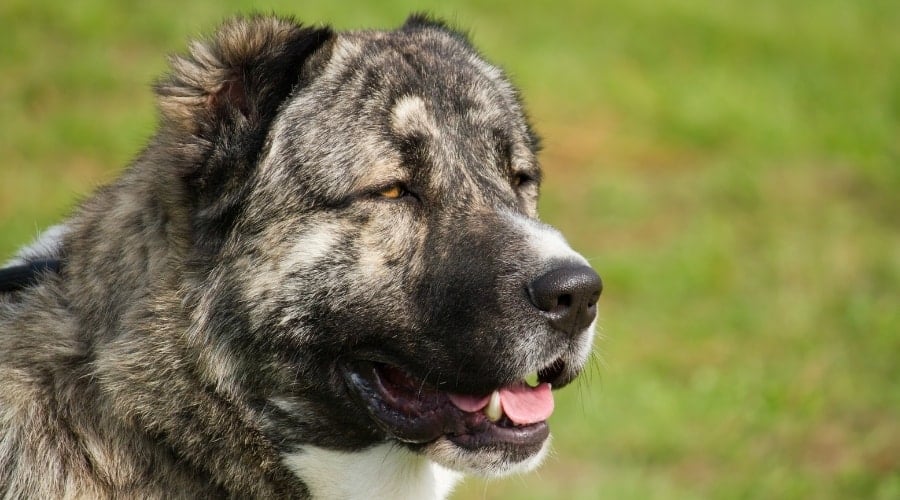
The Caucasian Ovcharka is an ancient massive breed with a thick coat of fur. Their heavy coat is also waterproof, which can come in handy in the cold winters of the steppe.
Aside from being physically imposing, Caucasian Ovcharka also are incredibly protective of their family and property. They could knock over a burglar or an unwanted person with ease if they wanted to. They are excellent guard dogs.
Ovcharki also can be quite difficult to train when it comes to obedience since they tend to be very independent. They also have a natural disdain for strangers, which may complicate your relationship.
16. Tibetan Mastiff
They are ancient, aloof, and look like they belong in a Game of Thrones finale.
Originally bred to guard Himalayan villages, Tibetan Mastiffs are as mysterious as they are massive. They’re independent, serious-minded, and tend to make their own calls. That makes them amazing guardians, but not great first-time pets.
Their thick coats, lion-like manes, and soulful stares give them the look of an ancient warrior wrapped in fluff.
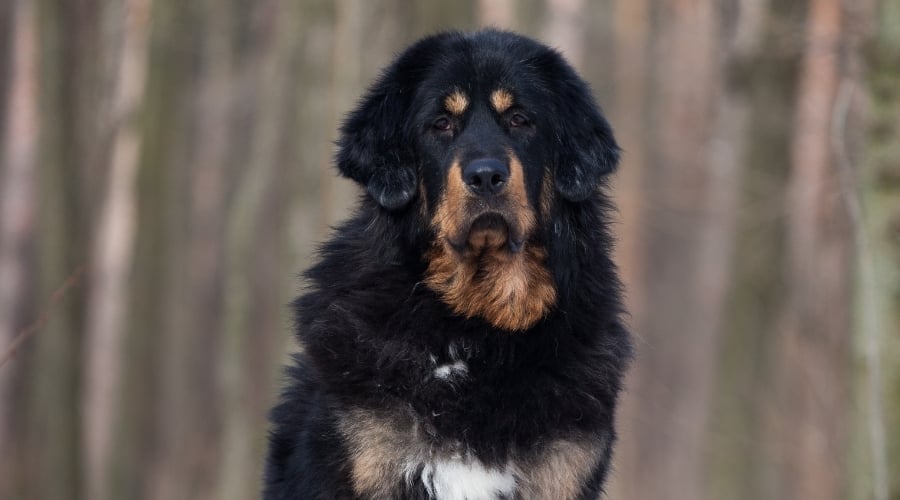
This pup weighs well over 100 pounds in adulthood. They have an expressive face and fluffy coat, making them look even larger. This breed is so ancient that its origins fall before the Common Era! They were initially used to protect campsites, villages, and monasteries.
Tibetan Mastiffs tend to be independent and strong-willed, given their status as solitary guard dogs. They may give strangers the cold shoulder, but don’t be fooled; they are fiercely devoted to their families.
Some may not accept strangers at all and will use the full force of their bulk against them. Tibetan Mastiffs can jump up to 6 feet high, and the sight of a huge dog scaling a high fence is not something to balk at!
17. Tosa Inu
Looks like a samurai’s dog and was literally bred to fight.
The Tosa Inu is a rare Japanese breed developed for dog fighting in controlled, ritualistic combat. Calm, composed, and incredibly powerful, they confidently carry themselves. You won’t hear a Tosa bark much; you’ll just feel them watching.
Ownership is restricted or banned in several countries, and for good reason. This is a serious breed for serious handlers. When unprovoked, most Tosa Inu can be a gentle, calm giant.
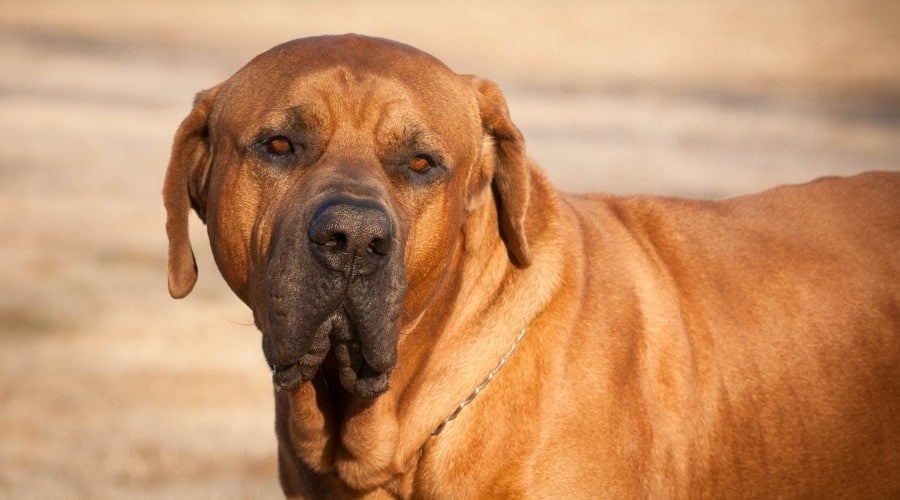
What makes the Tosa Inu scary is its ingrained aggression towards other animals. As such, it probably wouldn’t want to share the house with children or other pets. They can be lovely pets if trained well, but one that drools a lot and lunges at squirrels a bit too often.
18. Fila Brasileiro
If a panther were a dog, it might look and move like this.
The Fila Brasileiro is muscular, fast, and bred for tracking and protection in Brazil. They’re fearless and territorial, known for something called “ojeriza,” which is an intense distrust of strangers.
They bond hard with their families but are not interested in making new friends. With the wrong owner, this dog is a liability, which is why they often feature on banned breed lists. With the right one, it’s a living fortress.
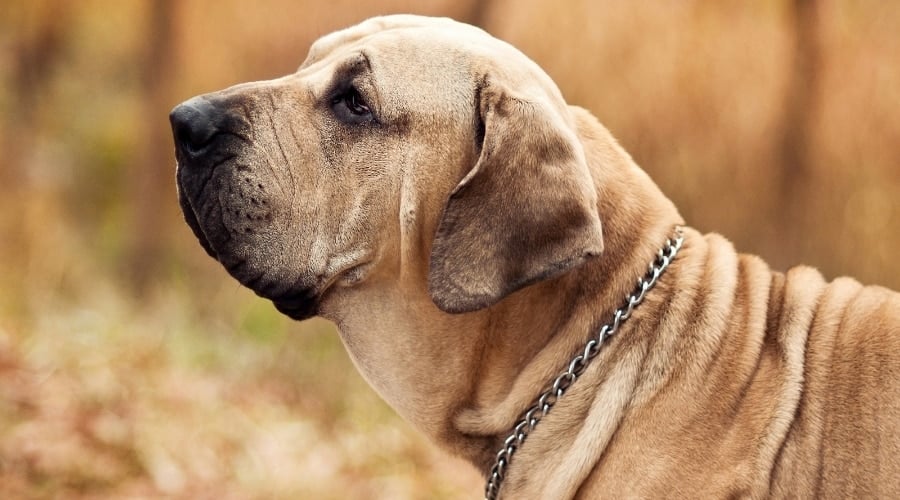
A Fila Brasileiro is another Mastiff breed with a heavy muzzle and a lot of loose skin. A well-bred Fila Brasileiro is extremely protective of its owner. They are not easily disturbed by strange noises or a new environment and can adjust well to kids in the right home.
Not all Fila Brasileiros will like people, however. Filas that have stopped socialization too early may grow to distrust all strangers. Some Filas may end up lunging at the end of their leash if improperly socialized. But when done right, they can learn when to act and when to give a stranger a friendly lick.
Smart & Scariest Dog Breeds
Military & Police Breeds Trained To Protect
These dogs don’t just look sharp; they are sharp. Used by police, military, and protection pros around the world, these scariest dog breeds are intelligent, intense, and built for action.
They don’t just respond to threats, they assess them. And when they move? It’s fast, focused, and precise.
19. Doberman Pinscher
Elegant, intelligent, and terrifying when they want to be.
Dobermans are sleek and fast and carry themselves like they knowOriginally bred as personal protection dogs, they’re brilliant at reading situations and reacting instantly. A Doberman’s sleek, muscular body and alert disposition make them perfect for professional work.
Their physical look, tall, tight, and muscular, adds to their aura, but it’s the alert mind behind those ears that makes them special. With the right training, they’re fiercely loyal, family-friendly, and laser-focused guardians.
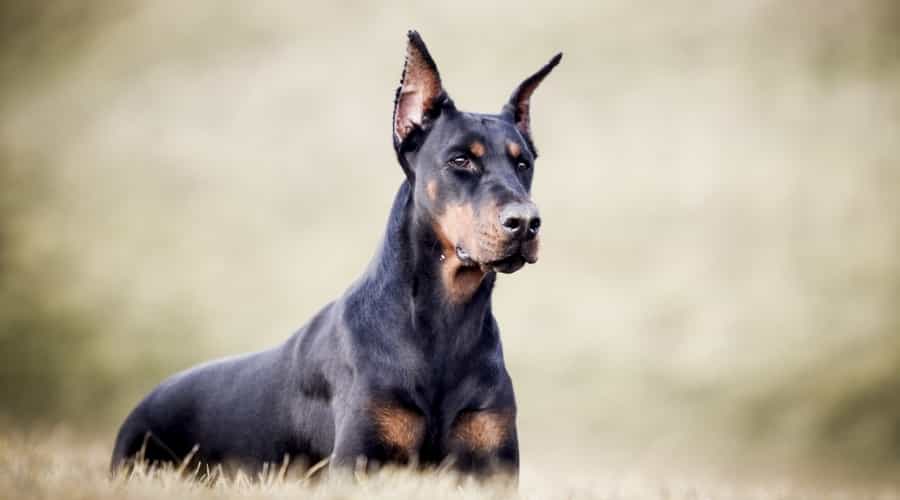
The fact that many Doberman Pinschers have a distinct squint on their face helps! They also don’t bark much, don’t dig much, and learn fast. A well-trained Doberman will be able to remain calm in the face of danger and can defend themselves and their family when needed.
They can also belong at home if their owners can handle the sheer amount of exercise Dobermans require. Dobermans are quick to action and fiercely loyal. Proper socialization from childhood is necessary for a Doberman pup to grow up well-mannered. Puppy training is also highly recommended.
20. German Shepherd
The classic K9, loyal, alert, and sharp as a tack.
German Shepherds are the gold standard of working dogs for a reason. They’re intelligent, fast learners, and totally dialed into their handlers.
Their mix of strength, obedience, and awareness makes them ideal for everything from police work to therapy. At home, they’re loyal protectors and deeply bonded companions. Just give them a job, or they’ll invent one.
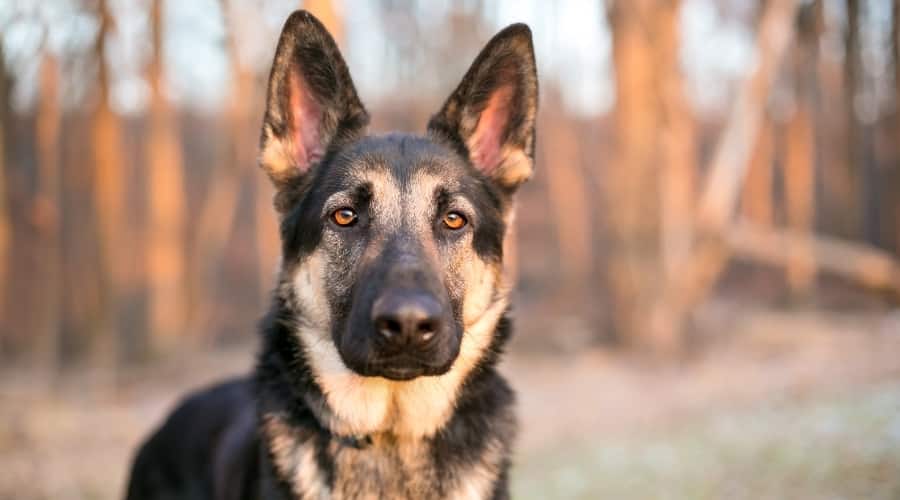
The German Shepherd rivals the Doberman for the position of “working dog on TV.” Intelligent, strong, and loyal, German Shepherds are often snapped up as guard dogs. Many hardened criminals know that a well-trained German Shepherd is not a dog to be trifled with.
Originally bred to protect their flocks, the sheer energy and strength that a German Shepherd possesses can turn away someone who does not wish to be met with a terrifying defender. German Shepherds need proper training, exercise, and socialization to truly be as fearsome and loyal as can be.
Puppy obedience classes are a must. They also need plenty of exercise and entertainment to avoid high-strung behavior. German Shepherds are ideal for active households with a large, fenced-in yard to play in and explore.
21. Belgian Malinois
Basically a German Shepherd with rocket fuel in its veins.
The Belgian Malinois is smaller, leaner, and even more intense than the GSD, it’s better-known cousin. These dogs are famously used by Navy SEALs, military units, and elite security teams.
They’re fast, fearless, and tireless, traits that make them brilliant in trained hands and way too much for most casual owners. Not a dog you “try out.” This is a full commitment.
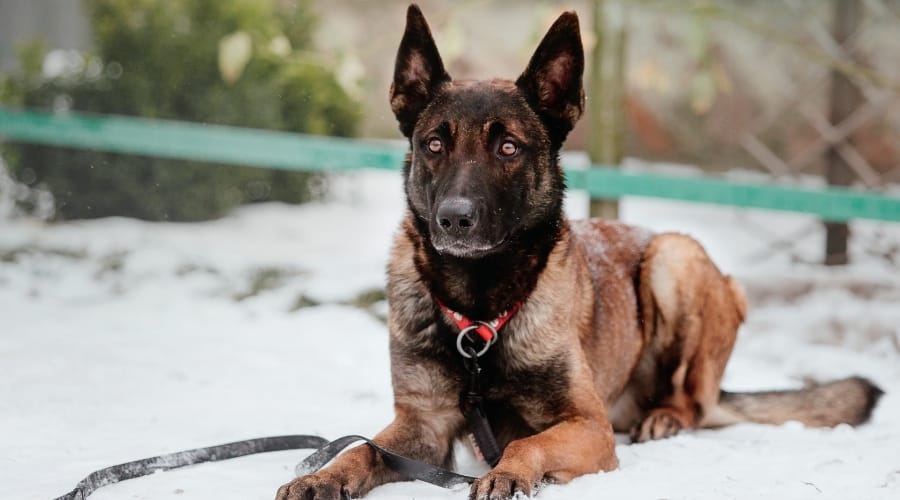
The Belgian Malinois is quickly becoming a common guard and work dog, on top of being a favorite dog breed of military personnel. They are powerful runners with inquisitive gazes and a passion for activity.
Like German Shepherds, Belgian Malinois are commonly seen as guard dogs and can easily turn away burglars through their appearance alone. They also are quick runners and sport powerful muscles that can keep up with a fleeing intruder.
To maintain their physique, Belgian Malinois require a lot of exercise and proper nutrition. They also do not fare well in enclosed spaces and may end up frustratedly running around in circles.
22. Boxer
Looks playful until they lock eyes with a threat.
Boxers have high energy, bold personalities, and the kind of strength that surprises people. Initially bred for hunting and protection, they’ve got the instincts of a working dog but the heart of a family clown.
They’re goofy and affectionate but also brave, territorial, and super alert. That bounce in their step? It comes with muscle underneath.
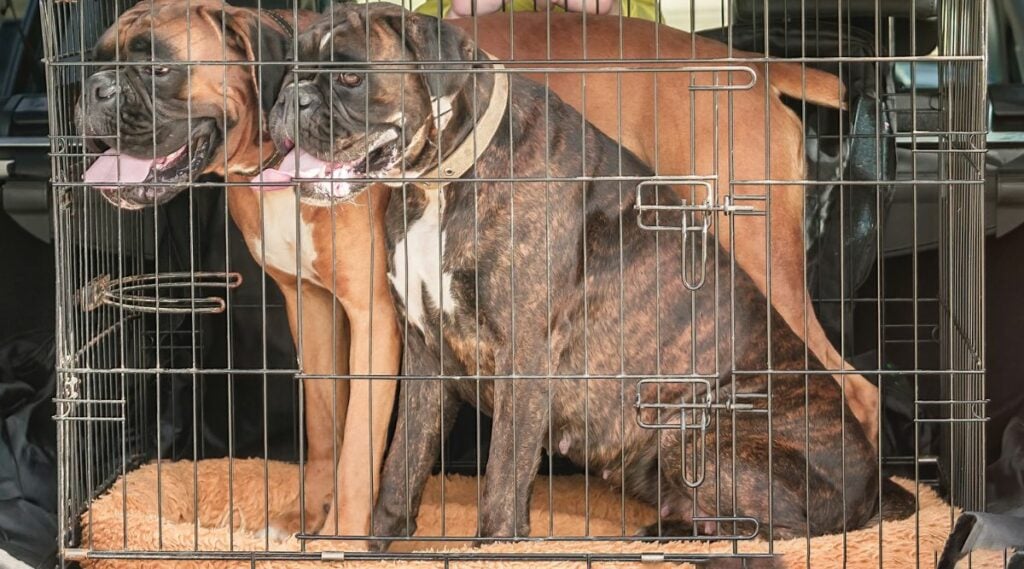
Boxers tend to be bright, alert bundles of energy with the tendency to play about. They require lots of walks and an active household. This is expected of a breed that used to be fighting dogs back in the day!
A grinning Boxer may deter some friends and foes because the combination of power and speed a Boxer possesses is dangerous indeed. As their name suggests, they also tend to stand on their hind legs and bat at people, much like a boxer! This action can frighten even friends who are not used to dogs.
Scariest Dog Breeds Banned In Several Countries
Some dogs don’t just look intimidating, they’ve made entire governments nervous. Whether due to appearance, strength, or bad press, certain breeds have landed on banned or restricted lists around the world.
Fair? That’s up for debate. But if you’re eyeing one of these scariest dog breeds, you’ll want to read the fine print, first.
Why Are Certain Dog Breeds Illegal?
Breed-specific legislation (BSL) exists in dozens of countries and cities, often aimed at reducing dog attacks by restricting breeds seen as “dangerous.” These laws usually target dogs with strong jaws, muscular builds, or a history of being used in fights.
Critics, like the American Veterinary Medical Association, say it’s more about how the dog is raised than how it looks, and they’re not wrong.
Countries With Breed-Specific Bans
Here’s a quick look at where some of the dogs on this list are banned or heavily restricted:
- United Kingdom – Pit Bull Terrier, Dogo Argentino, Fila Brasileiro, Tosa Inu, and XL Bullies
- Australia – Pitbull breeds, including the American Pit Bull Terrier, Dogo Argentino, Fila Brasileiro, Japanese Tosa, and Presa Canario
- New Zealand – American Pit Bull Terrier, Dogo Argentino, Fila Brasileiro, Japanese Tosa, and Presa Canario
- Germany – American Staffordshire Terrier, Bull Terrier, Pitbull Terrier, Staffordshire Bull Terrier. Five states have additional breed-specific restrictions
- Canada – Laws differ from province to province., but American Pitbull Terriers, American Staffordshire Terriers, and Staffordshire Bull Terriers are banned or restricted
Even in countries without outright bans, many of these scariest dog breeds face insurance restrictions, housing bans, or muzzle requirements in public.
Many of these scariest dog breeds are banned not for proven danger but for reputation. That’s what makes the laws controversial and why breed advocates push back hard.
What You Should Know Before Getting A Scary Dog Breed
- Check your local laws – Don’t just Google. Contact your local animal control or municipal office.
- Know the insurance game – Some homeowners or renters insurance won’t cover certain breeds.
- Training matters more than genetics – If you go for a “scary” breed, you need structure, socialization, and consistency from day one.
- Public perception is real – You may love your dog, but not everyone will see a cuddly protector. Be prepared for judgment and lead with responsibility.
Our Firsthand Experience Living With Breed Restrictions
When we moved to Germany with our Bull Terrier mix, Bonkers, we knew we’d face a few extra hurdles. Technically, he’s part Bull Terrier, but his vet records and EU passport simply listed him as a “Terrier Mix.” That technicality allowed us to bring him legally into the country.
But the paperwork didn’t stop the stares.
In our neighborhood, people avoided us. Group dog walks didn’t welcome us. Strangers screamed or literally leapt into bushes when they saw us in the park, even though Bonkers was always leashed and calm. To them, his head shape and body said “danger,” no matter how softly he wagged his tail.
When we eventually moved to Spain, things didn’t get easier. Despite his “Terrier Mix” documents, the airline classified him as a fighting breed. He was only allowed to travel in a special crate reserved for high-risk dogs, like some kind of flying threat.
The truth? Bonkers is the sweetest and softest dog I’ve ever met. He doesn’t want to fight. He wants to cuddle. He wants a soft spot on the couch, a hand to rest his head under, and someone to protect with his whole goofy heart.
He’s not the problem. The perception is.
– Emma Braby, Dog Mom & Writer for Canine Journal

Final Growl: Should You Be Scared Or Impressed?
These dogs look intimidating for a reason. Some were bred to guard castles. Others herded sheep in bear country. And yes, most could absolutely give a burglar second thoughts. But if this article taught you anything, it’s that looks can lie big time.
Though these are generalizations of each breed, always remember that each dog is different. Each and every puppy and dog has its own personality, and it is up to the owner to discover and learn from trusted breeders and online resources.
With the right amount of preparation, one can find a loyal protector, a loving friend, and a powerful ally in one of these scariest dog breeds.
Scary Looks Don’t Always Mean Danger
Many of the so-called “scariest dog breeds” are intensely loyal, affectionate, and sensitive to their humans. They might bark at a stranger but melt at a toddler’s hug. What matters most isn’t how they look, it’s how they’re raised. The real threat? Irresponsible ownership.
These dogs need more than love. They need boundaries, training, structure, and someone who understands what they were built for. You don’t have to be a pro trainer, but you do have to be all in.
Power without leadership? That’s a recipe for problems. But power with love, purpose, and training? That’s where these scariest dog breeds shine.
Take Care Of The Beast You Love
Owning a big, bold, intimidating breed means doing more than just earning their loyalty. You’ve got to protect their body, too. Start with having pet insurance in place. Powerful breeds can be prone to joint issues, ACL tears, and other emergencies that rack up unexpected vet bills fast.
Feed that muscle the right way with a high-quality diet that supports energy, joint health, and coat condition. Give their jaws a job with tough chew toys made for serious chompers, or you’ll be replacing furniture (and shoes) weekly.
And after all that guarding and goofing around, don’t forget a high-quality orthopedic bed. Big dogs need serious support to stay supported and rested. These scariest dog breeds give you everything, so make sure you’re giving back what they need.
We want to hear from you. What’s the “scary” dog in your life really like? Whether they guard the yard or hog the bed, drop your story in the comments and show the world what these misunderstood legends are really made of.



